Weston Cutter's Blog, page 12
April 3, 2014
Best Novel of 2014: Shotgun Lovesongs
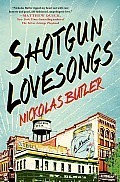 Nickolas Butler’s Shotgun Lovesongs is the best novel that will be published in 2014. I understand that I’m saying that in April, and also in a year in which there are lots of really really great writers who’ve got novels coming, and, sure, maybe there’s a chance one of them punches its way up to Shotgun, but the odds seem overwhelmingly against (maybe to be more clear: there’s a chance that some other novels this year will be better as novels-of-ideas, but none will come close to the heart-rending glories of Shotgun.).
Nickolas Butler’s Shotgun Lovesongs is the best novel that will be published in 2014. I understand that I’m saying that in April, and also in a year in which there are lots of really really great writers who’ve got novels coming, and, sure, maybe there’s a chance one of them punches its way up to Shotgun, but the odds seem overwhelmingly against (maybe to be more clear: there’s a chance that some other novels this year will be better as novels-of-ideas, but none will come close to the heart-rending glories of Shotgun.).
I’m trying to think of what to say about this thing that’ll somehow come close to accounting for the glories this book offers. Disclaimers are in order, I suppose: I’m a 35 year old man from the upper midwest, and I believe deeply in music and friendship, and I believe deeply in the place I’m from. I don’t think this makes me much unique—my own experience tells me there’s lots of us (from small scale [me and my friends] to large [Paul Westerberg, for instance]). That said: the midwest, especially the upper midwest, is absofuckinglutely Floyover Country: when Bon Iver hit, one of the big funs was watching coastal people be amazed that such stuff could come from the glorious, necessary nowhere that is the upper midwest. The place offers itself to being overlooked, which I more and more believe is As Folks Like It: if Westerberg were from Boston or Florida, from a place where people Noticed and Cared Early On, I can’t imagine his stuff would resonate the same. Maybe I’m wrong.
That’s a dark path, of course–trying to think one’s way into what makes any home magic. Let’s instead focus on Shotgun Lovesongs, and one last thing: there are thinky novels and there are heart novels, and there’s not one that’s better than the other. I happen to like heart novels, and so when I say Shotgun Lovesongs is so great, please know I’m talking about a book that makes a (supposedly) grown ass man get sniffly in his kitchen at 1pm on a Friday afternoon as he reads about two friends trying to find their way back to each other. This is me saying: if you’re in love with, say, Nabokov, or someone like that, steer clear.
Okay, still here? For real: get this book. Here’s the story: Little Wing, Wisconsin is the setting, a town that’s just like lots of small upper midwest towns (in Wisconsin, northern Iowa, and southern Minnesota)—a small farming community with empty buildings and high schoolers graduating each year with nothing but get-me-outta-here wings on their feet. Think, for instance, of Eau Claire, Wisconsin, where, until real recently, nothing was magic (necessarily), but then along came Justin Vernon, who mapped the place so obvious it can no longer be shook.
Shotgun Lovesongs could, in the most ungenerous read, be considered a novel based on Justin Vernon, except here the guy’s name is Leland (and instead of Bon Iver he conjures a band called Corvus), and plus Lee (as he’s called through most of the novel) isn’t really the center, anyway: there’s Lee, there’s Hank, there’s Kip, and there’s Ronnie, four guys who’ve grown up in small-town western Wisconsin and who, in their ways, are trying to be adults. They’re in their 30s. At the start of the book only Hank has kids but by the end that’ll change. At the start two of them are married and by the end four of them will have been married (that’s written intentionally muddled). None of that detaily stuff ultimately matters though, truly: what matters is that, in Shotgun Lovesongs, Nickolas Butler’s written the truest midwest novel of longing I know of.
Here’s how he writes, by the by, just so you know what you’re signing up for (this is from the book’s first section, which I’ll here argue is the book’s prettiest section [that's not to say I didn't cry at other stuff, but this is the spell-castingest part of the book]): “The invitations to Kip’s wedding were heavy with paper and ribbon and glitter. We carried them from our mailboxes and vehicles into our houses carefully, reverently, as if they held priceless, exquisite news. We vaguely knew the woman he was marrying. Felicia was from Chicago and now worked as a consultant from their new house just outside town. Exactly what or with whom she consulted, we didn’t really understand, though Eddy claimed that it had something to do with pharmaceuticals.” I quote that much so you can not the fall-down musicality of this thing Butler’s made: all those lines sing, each to each, an overlapping chorus of gorgeous as rhymes pick up on kitty-corner rhymes and the whole thing’s this almost bell-like incantation. Trust me when I say: Butler does this throughout. Each chapter’s got pages and pages just waiting for earmarks.
So there’s the overt pretty of the writing, sure, but what of the actual story? Oh lord, here’s where things actually get *better*. Shotgun Lovesongs has the four characters mentioned above, these four dudes, and the book’s an earnest attempt to try to examine what it is to look for a feasable home in your thirties when you’re from crumbling nowheres in the midwest. What’s a good way out? Make a band that hits big and skeedadle as a famous someone? Make boatloads on the Chicago exchange and miracle-mile yourself into some Hancock condo? Stick with the old calling and till your narrow path into the everlasting earth, farming as you go? While Butler’s trying to cast light on those stories, he’s also pulling off this other magic, which is: he’s writing about the friendship–love, let’s admit it–of dudes. Specifically not-supper-communicative dudes. Dudes who feel as real to me as my own shoes (if you’re from Iowa, Minnesota, Wisconsin, probably Michigan, and probably S Dakota, you deep-down Know the dudes in this book). To even address the love of dudes like this–to even try to touch it with a ten foot pole–is intensely tough, yet Butler not only attempts but totally, totally illuminates things, making you feel so deeply for these four fictional folks you’ll carry them with you weeks after finishing.
I don’t know what else to say. The book seems to be picking up some momentum, which is great–not that it started with none (the book sold in a bidding war, and the thing had a full-page ad in the New Yorker like three issues back), but, I’m not kidding, this is the book that should take the same track as Visit From the Goon Squad or Beautiful Ruins: smart, moving, glorious books which suck you in and offer so much characer you feel emptily bereft on finishing the thing. You need to read this book, whoever you are. You need to open your life up to this story.


April 1, 2014
The Blazing World + Sexism in Art/Lit/Media
 Siri Hustvedt’s THE BLAZING WORLD
Siri Hustvedt’s THE BLAZING WORLD
Siri Hustvedt’s newest novel, The Blazing World, came into my life at exactly the moment I needed it. Long story short and unspecific: I’ve been thinking much more about the sexism still present in American society, in the lit/art/media world especially, as well as what it means to be a young woman entering that scene after scrapping an author interview I intended to post on this site since the subject made it clear he thought of me less as a writer than a piece of ass.
The premise of the novel is simple: Harriet Burden is an artist receiving less attention than she knows she deserves, being passed up for recognition in comparison to her male counterparts. Frustrated with the critics and New York art scene at large, Burden creates a new show, but rather than taking credit for the exhibit, she hides her work behind the names of three males. It receives more attention and better reception than ever.
What is it about a name and a specific set of organs? Just a few years ago, I would have thought this book outdated, too rooted in the pre-Feminine Mystique world our grandmothers inhabited. Today, I couldn’t have understood it better.
There’s this part of the story, which itself is presented in a series of interviews, personal testimonies and diary entries of those involved or on the scene, where Harriet (often called Harry throughout the story, a perfectly suiting nickname) talks about the sexist phenomenon she experienced:
“All intellectual and artistic endeavors, even jokes, ironies, and parodies, fare better in the mind of the crowd when the crowd knows that somewhere behind the great work or great spoof it can locate a cock and a pair of balls (odorless, of course). The pecker and beanbags need not be real. Oh no, the mere idea that they exist will suffice to goad the crowd into greater appreciation.”
I keep inspirational quotes, poignant sayings and otherwise deep thoughts written and scattered throughout my apartment and office, and I wanted to include this paragraph. Would this make me fight harder to have my pecker-less voice heard and respected? Or would it just leave me feeling as defeated as I did when that author put his hand on my thigh? Ultimately, I kept the quote in the book and kept the book in a standout spot on my bookshelf.
Do you remember a couple years ago when there was that scandal in sportswriting surrounding Sarah Phillips, this hot 22-year-old writing about sports in a ‘mysteriously amazing way?’ ((Freshen up on the story here)). There were tons and tons of problems with her, really, mostly having to do with social media fraud/Twitter hacking, but the real thing I remember from that whole incident was (and I’m remember this from what friends told me/not finding the original article): OF COURSE she didn’t write these amazing sports stories alone. OF COURSE there was a guy behind it. At first, I thought it was SO COOL that the tables had turned, now it was better in the written world to be a young hot girl than a stuffy old white guy, but that thought quickly faded. Why? The scandal only went on to reinforce the whole idea that hot 22-year-old girls CAN’T WRITE, at least without a pair of balls controlling her behind the scenes.
Back to Hustvedt’s novel: Of course, when Harriet decides to reveal it was HER behind the successful exhibit, no one believes. First, they don’t think her previous work would lead to the level of art on display and then – this puts the nail in the coffin – one of the men whose names she used as a mask denies her claims, sticking to the lie that the work was HIS. As the reader, we get a background on the man’s erratic, volatile nature; the people of the art scene do not.
There’s probably been people who started reading this article and quit paragraphs ago. There’s probably people – men AND women – who are reading this, thinking I’m being dramatic, holding onto the ODD instance of sexism in modern society and that Hustvedt’s written a story that does the same. There’s probably guys getting annoyed at me and Hustvedt complaining about our disadvantage not agreeing woman are even still at a disadvantage; there’s probably women rolling their eyes at the words of angry feminists. I can’t help you. These are the things I’ve found to be true.
What else can I say: Hustvedt’s an unfathomably smart woman (quick sweep of her bio: PHD from Columbia; accredited lecturer on art, neurophysiology and neuropsychoanalysis; Gutenberg Fellow) who’s story will make you stop thinking you knew squat about art history (especially women’s art history) or what it’s like to put out art as a woman. Unless of course, you are a woman putting out art, then you’ll just read this and go off on your own little thoughts as I’ve been doing for pretty much this entire review. Either way, it’s a winner.


March 30, 2014
Fiction Catch-up
(FYI/Elsewhere: here’s a recent poem of mine up at Leveler [the editors of which, I think awesomely, write criticism-like things to go along with the poems they feature], and here’s my review of one of the year’s best books, Leslie Jamison’s THE EMPATHY EXAMS [seriously, the book's dazzling--here's DGarner's take if you need more/better encouragement, and, for real, the thing's destined to feature on a good bulk of the top ten lists at year's end])
 The Ghost Apple by Aaron Thier
The Ghost Apple by Aaron Thier
Good god, if for no other reason, get this book+begin it for the fun of it: it’s as pomo as one’s likely to find (seriously, too: what’s the last real actual postmodern book you’ve read? I ask that in earnest: it’s easy to call certain ticks or shimmies pomo, but I mean actual stuff that’s moving beyond what feel like [to me anyway] sort of tired tricks [self-awareness, the inbent recursiveness of the young, etc.]?) at present: using a mixture of forms, Thier’s awesomely satirizing the classic campus novel. Everything’s in his purview: business practices (agriculture, pharmacology), gender stuff, power stuff, race stuff. It’s massive, what he’s going for here. I don’t know how to sell this simplest: it’s a weird book, bouncing around from form to form to form (the first ‘chapter’ (or whatever: fictional unit) starts with a letter dated 1788; the next thing’s a college recruitment letter. There’s a 70 year old dean going undercover as an underclassman. Look, there’s plenty: read this thing. Their’s written a sharply, sharply funny and insightful novel, and, dig it: it’s his first one. Meaning: this is a fine way to start.
On Earth as It Is in Heaven by Davide Enia
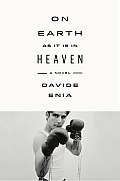
Most propulsive read in a long, long while, this thing set in 1980′s Palermo, Sicily’s a big glorious athletic-paced gangbustery trap set for all wandering attentions. It happens to be most about boxing, but, through boxing, is even more about being a man. That doesn’t sell it anywhere near enough, but the truth is nothing’ll sell this as well as its first pages (which, fortunately for you, you can read through the dark lordship of Amazon [but buy the thing at Powells at least]).
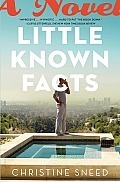 Little Known Facts by Christine Sneed
Little Known Facts by Christine Sneed
Reason #whatever to read Sneed: her first collection of stories was titled Portraits of a Few of the People I’ve Made Cry, which I’ve meant to get but haven’t. Among the reasons I’ll be making much more of a push to get that book: the fantastic ease of the writing here in Little Known Facts. The novel’s this panoramic portrait of a middle-aged Hollywood actor (all the press materials kept saying Harrison Ford, so I guess yr supposed to think: Harrison Ford [I guess it's fine, but I'd argue the book's good enough not to need some Actual Actor to make the reader begin with/from to hang the story on: the book's hook enough]), Renn Ivins, and the story’s told through 11 chapters with various points-of-view: there’s his jackass of a son, his ex-wife, his son’s girlfriend, etc. This trick should not sound annoying or cloying: it works tremendously well, and offers a shifting, stutter-stepped glimpse of this guy. I don’t know quite how to say this: what I mean is that the novel has what feels like a trick set-up, and, even knowing from the start that the chapters will switch POV and voice, you’re still sort of mesmerized and taken-in—even knowing how the trick’s working, it still works, I’m trying to say. All of which doesn’t as much matter, anyway: it’s a compellingly great+quick read.
Once You Break a Knuckle by D. W. Wilson
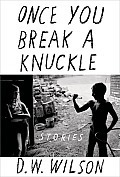
The less from me on this one the better—not because it’s bad, in fact, but the opposite. Wilson’s stories are freakishly compelling things in their wild ways: they read, almost to a one, with incredibly hard surfaces. Any softness within the stories—the emotional core of things—is largely hinted at. This is, yes, a certain (and certainly popular) type of fiction, at present and as ever, yet Wilson’s stuff doesn’t have that flat-as-west-Texas prose so many dudes go for with all the Bible-throated McCarthyisms built in: Wilson writes gorgeous, willowy sentences that feel, to me, deeply like thin branches from a very strong tree (or like the arms of a character, Mitch, in “Don’t Touch the Ground,” arms Wilson writes as follows: “His arms dangled low and scrawny looking until you grappled them. He liked running, climbing, and building things; by the time he turned nine he had scaled every tree in the neighborhood except one—a giant pine with no low branches and a trunk so wide even my old man couldn’t reach halfway around. Mitch called it the Chevy. I don’t know why.” Wilson’s sentences have something of those arms to them: it’s not that they appear scrawny looking, but you can’t guess the full gutting strength of them till you’re in the story.). It’s a fantastic, brutally beautiful book.
It’s been too long since I’ve read a built-for-pleasure-and-speed mystery, and Pavone’s The Accident has been hailed and anticipated for a bit, mostly on the strength of his debut, The Expats, which was a massive hit. The Accident is set in Manhattan (with jaunts to Europe and LA), and, specifically, is set in the book world: the story centers around Isabel Reed, an agent who gets a mysterious, anonymous manuscript titled The Accident. The MS is gripping and amazing and is, in fact, a bio of a media mogul figure featuring revelations that’d take the guy down (not to mention the CIA), and then everyone who comes into contact with the ms begins dying. These books are always silliest when their plots are sketched: what you really want to know about The Accident is 1) are there enough twists to keep you surprised through the end and 2) is the writing mostly good enough to ease you over the almost necessarily hackneyed elements of Big Market mysteries. The answer to both is a big yes: the twists taper off at the very end, as they almost naturally must, but there are still enough to offer a late-paged gasp, and the writing’s way better than it needs to be given the propulsive plot. Are you looking for some serious shit with navels gazed at? Head elsewhere. You want something you’re gonna damn near accidentally set on fire with the friction you create as you grasp for the next page to turn? The Accident, friend: that one’s for you (check Stephen King’s tweet below if you don’t believe:


March 27, 2014
A New Retrospective by A.B. Yehoshua
 THE RETROSPECTIVE by A.B. Yehoshua
THE RETROSPECTIVE by A.B. Yehoshua
Translated into English for the first time, A.B. Yehoshua’s novel The Retrospective is a tale of loyalty, allegiance and redemption to be compared with classics from Steinbeck, Faulkner and other great names in literature. Already the winner of the National Jewish Book Award and the Israel Prize, among others recognitions, it’s about time American audiences are getting a chance to read this gripping story.
The story starts off with Moses, an elderly film director, and the lead actress in the majority of his films, Ruth, arriving in Spain for a three-day retrospective of his films to be held at Santiago de Compostela. Moses is apprehensive as to the turnout, what kind of a reception his esoteric, Kafka-esque films will draw among this foreign crowd, and as always, concerned about Ruth, the woman he meet when she was barely more than a child, now a trouble yet still beautiful woman in her fifties.
As the retrospective begins, with one of Moses’ earliest films, created back when he was still working with the writer, producer and creative mind Trigano, a man who was also Ruth’s former lover, Moses is forced to rework his work in a foreign tongue – they are, after all, dubbed in Spanish for the audience – and focus on the character, the shots and his own direction. It’s unsettling for the director to look back at this early film and she all the handiwork of his former partner, to see the ways in which Ruth has changed since that time, and to see the gaps in which he could have / should have capitalized on the moment just a pinch longer or more in depth.
It’s this looking back that causes Moses to contemplate about the very reasons he and Trigano spilt at all. As it turns out, the fallout was over one especially explicit scene with Ruth, centering on the concept of Roman Charity: a young woman, a new mother who has just lost a child for whatever the reason, nurses an eldery man, sometimes a criminal with his hands tied behind his back, sometimes a simple beggar in the streets. It’s a concept Moses discovers for the first time here in Spain as a theme in art rather than a simply perversion of Trigano’s mind. He begins to think about the importance of the concept and reflect back on the reasons why he cut the scene from his own film – Ruth, young and on the edge of a break with Trigano was in tears, begging both men not to make her do the scene. Moses took pity on the actress, cut the scene, and ultimately caused the breakup of Ruth and Trigano as well as the break of his and Trigano’s creative partnership.
As the retrospective continues, Moses begins to feel the power of Trigano’s hand is involved, both in the translations of the Spanish dubbings as well as the choice of the films shown throughout the days, all of which are his early works on which Trigano was the most invested or fought the most over how the scenes played out. Unsurprisingly, at the end of the retrospective as he digs deeper to find the reasons why it was even held in the first place, why the films chosen were the only ones of his career selected, Moses finds that Trigano was in fact behind the event after all. It’s with this knowledge that Moses returns to his home in Israel, eager to find and confront his former partner once and for all, to put the past behind if at all possible.
The Retrospective reads so personal, it’s hard not to be in the head of Moses, to feel his remorse and understand his choices. It’s a choice to look onto the past, to rethink about the things that you once felt so sure, to see them through another light.
Like I said earlier, it’s about time this book is reaching American audiences. It’s a great read.


March 23, 2014
Alex Chilton Forever and ever and ever amen amen amen
Pre-review: my chapbook Enough was released recently/is now available from Burnside Review Press (which press also, by the by, publishes of course the great Burnside Review, though more recently and equally badassly they’ve/it’s published the latest collections from Matthew Lippman and Jeff Alessandrelli [whose surname I've just now for the first time spelled correctly on my first try], both of which are Fucking Amazing).
 A Man Called Destruction: The Life and Music of Alex Chilton by Holly George-Warren
A Man Called Destruction: The Life and Music of Alex Chilton by Holly George-Warren
If you know Chilton’s name, you’re gonna buy this book. Unfortunately, not enough folks know his name, and I’d guess 97% of those of us that do look precisely alike: bearded, bespectacled, white, with a record collection that leans Replacements/Raspberries/power-pop (Posies, REM, etc). Sure: Chilton was the lead singer of The Box Tops, whose 60s track “The Letter” was a huge huge huge radio hit, and perhaps some boomers tracked the single without ever clocking the lead singer’s name, but the bulk of Chilton’s known-ness (I’d guess/imagine) stems from Big Star, the Almost Perfect Rock Band (they anyway set the template for the Perfect Rock Band: The Replacement). If you know the movie That 70s Show, you’ve heard a Big Star song (the show’s entry track “In the Street” is theirs, though the TV version’s a Cheap Trick cover [not saying, just saying]). I’m making a hash of this.
Look: in writing, they’re called writer’s writers—James Salter or whoever. Folks who other writers love but aren’t known enough by public. There’s not (I don’t think) a musician’s musician but it’d be fair to put Chilton and Big Star on the same shelf as Lou Reed and VU: artists who spurred the birth of a thousand other bands. Nick Drake used to be that (which is not to pooh-pooh the VW breakthrough of his: it’s fine, but, before that, there was a fervent clutch of us who fucking adored that guy, and it’s not that we don’t anymore [in lots of ways in fact the VW commercial ushered in what we most hoped for: everybody should listen to this you say about your favorite band, and then, boom, everybody does]). There are still plenty of folks like this, and plenty working presently who don’t/won’t get the coverage they should.
But Chilton, though, is not just the former (and, sadly, dead) leader of Big Star (and the Box Tops): he was as iconoclast as they come. He just Did. Not. Fucking. Care. Or: he may have, but not in the ways that record companies or anyone else could monetize. This, I’d argue, is one of the best things this book does: it shows a guy who was just an artist, chasing his own perfect internal click. Did he, in less than 20 years, go from having the country’s #1 single to being a dishwasher? He did, and that’s a hell of a tagline to sell a book. HOWEVER, just as important: he was also a guy who just (like the song nearly says) Made His Own Kind of Music (if you’re trying to get into Chilton: do not start with his solo albums).
For the record: his Own Kind of Music—the stuff he seems (according to George-Warren’s great book, which is the actual artifact under review here, and which book is just wonderful—not pandering as it could’ve so easily been, and smart as hell, and not punch-pulling [Chilton sounds like a fucking weirdo sometimes, but you never dislike him, not quite: you just sort of want to hug him or something, and that impulse is all because of George-Warren]. Again: if you like Chilton, you must get this; if you don’t like or know Chilton, 1) fix that and 2) get the book for potential reasons why) to have believed in most, is, for lots of us, glorious—and I mean not just his messy stuff, but his off stuff. His weirder crap. Sure: “Thirteen” is among the most pure +perfect pop gorgeousnesses in existence. HOWEVER: it’s hard to argue with “Hey! Little Child” or some of the other tracks from other/weirder albums.
Look: nothing I can say’ll be enough. Chilton’s one of the five most important musicians to me, and to lots of the folks I’m closest to. I haven’t tried to meet many musicians, regardless of how much I love them, but he’s the one I’m gladdest I ever met (shook his hand after he played a set with the Jayhawks at the Taste of MN, had to’ve been like ’97). Holly George-Warren deserves massive gratitude just for writing this about this man—for covering the life of one of the indisputably Great artists of the 20th C—but also for making the book great, for writing a bio that’s not just cloying adoration but something which tries to take/offer the full, complicated measure of the dude. Hard not to read it fast, flashing pages by. Hard not to go right back to the music and blast all the old glory Chilton made or had a hand in.


March 20, 2014
BLACK MOON by Kenneth Calhoun
Dystopian lit is probably one of my favorite types of lit ever. More accurately, GOOD dystopian lit. Atwood’s The Handmaid’s Tale, McCarthy’s The Road, Orwell’s 1984… I mean, at this point, I’m just listing all the dystopian books I’ve read without throwing away because of boredom.
Here’s the deal: It’s the author’s freakin’ entire imagination. They LITERALLY create a different world, which, I mean, you can say about *all* literature, but with the dystopian stuff, it can get weird and crazy and we totally nod with it and see what the characters are gonna do / how they’ll interact in this new land we’ve all agreed exists somewhere in the future. So really, there’s nothing more disappointing when the author has so much freedom to make a new society and way of life and they simply make everything so blah.
I can’t even name novels that I feel this way about, since I threw them away instantly (there was some Hunger Games-esque series someone recommended once that was absolute scum and I hated it so much, my mind has literally blocked its title from my conscious mind at present), but examples of bad dystopian premises include: I am Legend, The Happening (is this even popular enough to be recognizable? Anyway, it was a M. Night Shyamalan film about Zooey Deschanel and Mark Wahlberg living in a world where plants sent out gases that made people commit suicide), and basically any other horror movie that ends with society adjusting to life alongside the Zombie apocalypse that doesn’t star Simon Pegg.
This is where Kenneth Calhoun’s Black Moon gets it so deliciously right. His is a world in maybe not even the future past 2015 (seriously – no weird advancements like operating systems that sound like Scarlett Johansson or flying cars) where the people are just hovering on the edge of becoming the frightening, flesh-eating zombies. They’re the insomniacs that have become the majority, the sleepless that count days rather than hours worth of sheep.
Basically, we get no explanation of how / why the sleeplessness starts. Suddenly, the world is filled with insomnia. In an eerie, Gabriel-Garcia-Marquez via One Hundred Years of Solitude way, it doesn’t kill them. They just… go on. Sure, they seek out cures and hopes in any place with a half-way convincing promise, but mostly, they slowly get confused in the way you’d except a person who hasn’t slept in a week and somehow hasn’t died would get. The only really scary part of their sleeplessness? It tricks their minds into believing one all-consuming lie: Sleep will return if they kill those who CAN still sleep.
Calhoun’s story focuses the most on the outliers, the people with the Catch-22 curse of sleep. From a little girl whose parents whisper about the way she hides underneath the bed to keep them from catching her snooze, to a girl surviving off an implant that shuts her off for the night, these people are either the luckiest or the worst off of this new earth. The benefits are obvious – these characters keep clean minds, basic human functions and have the edge over the insomniatic masses in tests of reflex or wit. On the flip side, they’re hunted down and hated like rabid dogs by those literally gone insane from jealousy and the voices in their heads.
How it works: Calhoun never resorts to zombie riff-raff nonsense. Even as the people grow slowly insane, the parents plot attempts to cut apart their sleeping daughter, wives have to be chained up to keep them from ripping apart their husbands as they sleep, they’re still deeply human. They still act as normal beings, good parents and all, whenever they’re NOT around sleepers; it’s just this sickness that pervades when they see someone with something they can’t have. You know, just basic human stuff, to a new sort of extreme level.
So I think that sets it up pretty well. Premise: The World Can’t Sleep. Plot: How do folks (the sleepers and the non) go on. Zombie Count: Zero. Emotions Twisting Your Gut Count: 8 out of 10. Really, if you liked any of the other books/movies I mentioned above (even low-budget Zooey films), you’ll love this book.


March 18, 2014
Real quick shameless self-promotion
 Bee-tee-dubs, I got some new stuff out that you should read. Here’s a story in the new issue of Shenandoah, and I’ve also got a couple poems in the new Heavy Feather Review. Tell yer friends.
Bee-tee-dubs, I got some new stuff out that you should read. Here’s a story in the new issue of Shenandoah, and I’ve also got a couple poems in the new Heavy Feather Review. Tell yer friends.


Perfect Little Mannequin Girl
Ellen Litman’s “Mannequin Girl”
Mannequin Girl is a novel about following Kat, a little Jewish girl growing up in 1980s Russia, as she transitions from a misshapen girl with scoliosis and a metal brace into a woman at her private boarding school. But, the thing is, I really summarizing a book into one sentence, and Mannequin Girl is a perfect example why.
You hear “little Jewish girl in Russia” and immediately think of the daughters in Fiddler on the Roof (or at least I do). Can Kat wear skirts? If her father already looking for her husband? Similar questions? No. Kat’s just happens to be born Jewish, just like a girl happens to be born with dimples, and with her parents, their ethnicity has little importance day by day.
You hear “Russia in the 1980s” and think, “oh wow! This must be literature about how horrible the country was, how oppressed these kids felt! How freedom tasted so close!” Again, not so much. Sure, Kat’s parents make jokes that equated “Communism will be here in 2000!” with “when pigs fly!” and gravitate towards the arts that subtly criticize the government, but really, the way they talk about it isn’t anything more than some people talk about Obamacare.
You hear “transforming from girl into woman” and think it’s gonna be another one of those Are You There God? It’s Me, Margaret tales of first crushes, first periods and just middle school drama. If you haven’t caught the pattern – not true in the slightest. Sure, she has a crush in the book, but she also has Dreams and Goals and her own shit going on. She’s more mature in middle-school than a lot of adults you probably know.
So, all those worries aside: here’s what Mannequin Girl is really about:
7-year old Kat Knopman is a precocious little girl (the best kind, of course) who needs her parents as much as they need her. Both parents are young, intellectual teachers who’d choose principles over common sense. Anechka, a moody, sometimes harsh but ultimately compassionate woman is her mother; her father the absent-minded, lovable and kind-hearted Misha. It’s neither the fault of Anechka’s coldness or Misha’s carelessness, though they may believe, when Kat is diagnosed with an early case of scoliosis and it’s determined she’ll be spending her school years in a heavy metal brace to correct her spine.
It’s not as dreary as it sounds. Yes, it is a boarding school for infirm children, hunchbacks, girls with birdcage brackets around their tiny frames, but other than that, from all accounts, it’s not an unpleasant place. The kids can be cruel – the main gaggle of girls excludes Kat from their play based on her last name, the boys even stay apart from this outcast. Nevertheless, she’s a clever girl. It doesn’t break her.
By the time we meet up with Kat in 7th grade, she’s made a best friend with one of the richest girls in the school and found her clique with the drama kids. Her parents are now with her at the school, a blessing, really – not only do they have secure teaching jobs, they’re also in charge of the Theatre, including musical shows, dramatic readings, etc., which seems to be the perfect place for these two dreamers. It’s in this school that Kat finds her place – as a mentor to students falling behind, as a trusted ensemble member of her parents’ productions. Whenever something threatens the place of Kat and her family within the school, however, is where the trouble begins.
Personally, I loved this book. But I also love books about middle-school girls, especially the awkward ones. Mannequin Girl, however, is so much more than that. It’s the story of a young spirit reaching to find her place in the world. It’s the story of girls hiding behind a crush on the perfect looking boy, knowing her looks (or in this case, brace) may keep him from every noticing her. Think of this less as a tween melodrama, more of A Separate Peace. And seriously – think of it often. Especially while inside a Barnes & Noble where you have the chance to purchase this novel and read it for yourself.


Old Stars, New Constellations
A review of Toad the Wet Sprocket’s New Constellation

I’m sure I’ve made it clear from my interviews with Toad the Wet Sprocket front man Glen Phillips how much of a fan I am of the group. And if you were a teenager in the early 90s, you probably are, too; TTWS was one of those bands you couldn’t not appreciate, even if you didn’t actively listen to them. Their songs were catchy but not annoyingly so, and Phillips’ voice had an honest resonance to it that most of those other growly rock bands of the time couldn’t manage. That, I think, is one of the reasons Toad stuck around for so long without losing a single band member. Now, after sixteen years, the band is back with their latest album New Constellation, and while the band might have lost a step or two over the past several years, it’s still a hell of an album from a collection of musicians with outstanding musical chemistry.
New Constellation opens with the title track, a peppy, vibrant number that establishes a cheerful tone: I could fly through the heavens on the power of my heart/ and thread my way through a string of stars/ to write your name in a new constellation/ declare my love to all creation. This has always been a hallmark of TTWS’s work, their unwavering optimism and aspirations of hope, though it’s never been more prominent than on this album.
From here we move to “California Wasted,” a soulful meditation on our tendency to make the same mistakes time and again despite our best efforts. It’s the best track on the album, though tunes like “The Eye” and “Rare Bird” aren’t far behind.
From there, however, the album plateaus, the songs becoming a little too predictable, too tidy. That optimism and hopefulness, it becomes overbearing, almost saccharine. Songs like “Life is Beautiful,” while catchy, ultimately offer little substance, far less at least than the band’s previous albums. And I realize it’s probably unfair to compare New Constellation to their earlier efforts–these guys have been together since they were in high school, and now they’re in their forties; of course their collective worldview is going to change–but I think it is worth pointing out that one of the band’s hallmarks has always been their recognition that the world is a very difficult place but that it can be better. This, I believe, comes from Phillips’ years of struggling with depression. Take their best-known songs like “All I Want” or ” Something’s Always Wrong.” Here you have someone searching for some form of happiness in a world that he knows can be cold and unforgiving. In New Constellation, however, we’ve already found that happiness and are rejoicing over it. Is this a bad approach? Not really, though I confess it’s not terribly interesting. Rather, it comes across as the work of a very talented band that is running short of ideas.
Still, that’s not to say the album is a failure. It’s not. The songs are smooth and vibrant and full of great melody hooks. I think maybe the problem is on my end; maybe I was expecting too much from the band. I’m finding this to be more of a problem the older I get: bands and musicians I once exalted begin to disappoint me, not out of any fault of their own, but because I’m inclined to pigeonhole them to the signature tracks to which I have some nostalgic attachment. But that’s no way to approach music. New Constellation doesn’t quite hold up to TTWS’s previous work, but it doesn’t have to. All it has to do is make the listener feel good, and that’s something that has always come easy to the band.


March 15, 2014
D. Foy’s MADE TO BREAK
This is a deeply great and strange book. I’ve now tried to write six different sentences to follow that first one, each attepting to saddle the horse of what constitutes strange writing and attempt a definition or something (I hate this, by the way: having an interview get you underwater this early; perhaps I’m just rusty). Maybe let’s start again:
D Foy‘s Made to Break is set in 1996 and features a group of friends vacationing through New Years at a cabin in Tahoe, but the weather turns terrible and they’re trapped in the cabin, and one of the friends (I keep writing griends) is hurt and is getting worse. Again: cabin in Tahoe, new years (meaning: fairly abandoned), and bad weather. Maybe the boilerplate for this is that, through the set-up, Foy creates a scenario through which his characters are forced to confront each other, and their past, and their addictions, and their everything (introduce a claustrophic can’t-get-out situation, and that’s the story: how do they get out?), and that’s certainly true, and Foy’s great in terms of psychological acuity, and he presents these maybe PG-13-level-messed-up folks well and clearly, and if you’re looking for characters to wonder and care about while reading, Made to Break‘s a good bet.
(re those characters and their PG-13 rating: I don’t know. They do significant quantities of drugs, and they’re certainly reckless, but they feel totally, totally of a piece of a certain time and social class. I graduated high school in ’97, so the folks in Made to Break are years older than I was then, but what they were doing was 100% recognizable as what young adults seemed then to be into and in. Maybe their goings-on are actually rated R, but I’d argue to the contrary.)
But the reason I’d much more push anyone to read this is Foy’s writing. Here’s one of the ways (I think) this book is weird, and it’s the very best way: let’s admit that we’re at a point of sort of flat-panned, affectless voices in fiction, in large part. That’s the going thrum, anyway, it seems to me. Certainly we’re not of a moment of deep purple explosiony stuff, where the lines fairly branch and branch and branch off, sizzling ecstatic and nonstop, Kerouacian and Hunter S Thompsonishly bent. Here’s what I mean (and no apologies for quoting at length: this stuff gets its gangbusters from accretion, so even this is not enough):
I’d just come in from a long night of raves south of Market. My pal Bruno and I had hooked up with a pal of his, a shrimp of a cat named Andre. The kid was black as a raven, with a hoop through his septum and bleach his fro—a stripe front to back—and an Angel Flight suit, white, propped by a polyester shirt of midnight black, and gold enough round his neck to’ve drained Fort Knox. He was the slickest dealer I’d ever met.
But before that even, Bruno and I had dropped a few tabs of X and hit the floor to mix it with the ladies. Three spicy Filipinas caught us gawking and slithered over post-haste, wriggles and tits and laughter. We zoomed in on two and left the third to share till someone else appeared. This went on for who-knows-how-long, ten or fifteen, or forty-five or fifty. What I can say for sure is how once Bruno’s chick befan to look better than mine, I weaseled my way between them. And by God if it wasn’t five minutes more that the girl had grown eight arms, a hand on my chest, a hand in my hair, another on my Jean Jeudi.
That’s page 112, by the way, and as flip-open-to-it respresentative as anything. It’s not just that the passage hews perfectly to the way experience feels (the dis- and interruptions and but before that even, the mimicry of speech [mix it with the ladies]), but the almost crunchy linguistics of certain phrases: black as a raven…hoop through his septum and bleach his fro. Where have you read anything like that recently? Maybe this is just my own dumb/dim fault for reading what I do but I’m reading very very little that’s got that sort of propulsion, that sort of swerve and excess. The thing reads electric paisley, almost, and I’ll here add that I don’t like this sort of writing. Ask me contextlessly while I’m trying to enjoy a turkey sandwich on a Tuesday and I’ll say fuck no, I don’t want purple, overdone prose. But this stuff of Foy’s sings just wild, just wild. I cared much, much more for the sentences than any of the characters, which isn’t to say the characters are bad at all, but more to say that Foy’s waving a motherfucker of a wand here, casting some something of a spell.
Anyway, that’s the big reason to jump up and down about this book: the shock of the new, or at least (I’d argue) the re-emergence of a style that’s been principally dormant for a good while. I don’t see how you could read this thing and not be propulsively charged right the hell up. Take or leave whatever else you want: you gotta get your eyes wet with this sort of sentencing. You really do.



 The Accident by Chris Pavone
The Accident by Chris Pavone
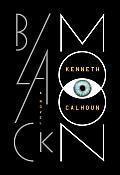
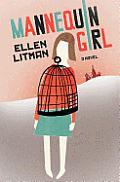
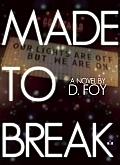 Made to Break by D. Foy
Made to Break by D. Foy

